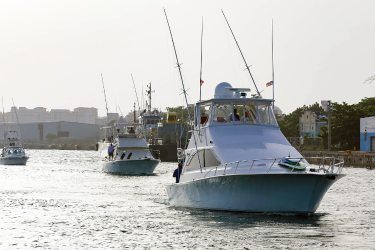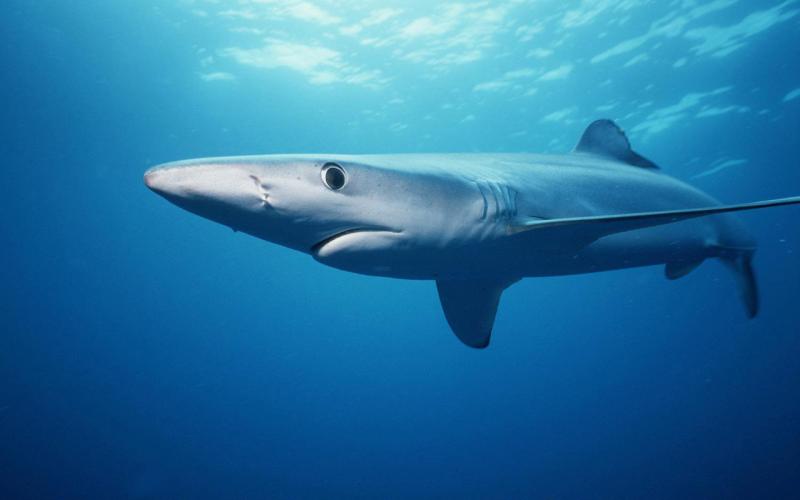Join us for Shark Week July 11-18, 2021 as we celebrate one of the ocean's top predators. Sharks play a key role in food web and help ensure the balance of ocean ecosystems.
NOAA Fisheries manages commercial and recreational shark fisheries in the Atlantic Ocean. We work with three regional fishery management councils to conserve and sustainably manage sharks in the Pacific Ocean. We conduct research, assess stocks, work with U.S. fishermen, and implement restrictions on shark harvests. Through these actions, we have made significant progress toward ending overfishing and rebuilding overfished stocks for long-term sustainability.
Features
Meet Enric Cortés, Research Fishery Biologist
Dr. Enric Cortés is a shark researcher who helps provide shark population assessments at the Southeast Fisheries Science Center.
Learn more about Dr. Enric Cortés and his work
Meet John Carlson, Research Fishery Biologist
Dr. John Carlson from our Southeast Fisheries Science Center works to provide data and analysis for shark population assessments and recovery plans.
Learn more about Dr. John Carlson and his work with sharks, rays, and skates
2021 Coastal Survey Catches Nearly 2,500 Atlantic Sharks
Every two to three years, scientists capture and tag sharks along the southeast Atlantic coast to collect a variety of data. This year’s survey captured nearly 2,500 from 11 different shark species.
Learn more about the 2021 Large Coastal Shark Bottom Longline Survey
The Final Four of Freaky Sharks
Help us decide which of these four sharks is the freakiest in the ocean! Visit NOAA Fisheries social media accounts to vote for one of these freaky fish. We'll reveal the winner and more freakish details on Freaky Shark Friday!
Learn more about these freaky fish
12 Shark Facts That May Surprise You
Celebrate Shark Week by learning something new about sharks!
Sharks in Atlantic Coastal Waters
Sharks are found in coastal waters along the East Coast, and some species populations are on the rise. But your chances of interacting with one are still very low.
Learn more about sharks in Atlantic coastal waters
U.S.-Caught Sharks Are a Sustainable Food Choice
While overfishing has greatly depleted some shark populations overseas, U.S. shark fisheries are some of the most sustainable in the world.
Learn more about U.S.-caught sharks
How Our Shark Finning Ban Helps Us Sustainably Manage Shark Fisheries
Hear from a shark management expert about our requirement that fishermen bring sharks to shore with their fins naturally attached.
Learn more about our shark finning ban
Are All U.S. Sharks Overfished?
The majority of sharks harvested in the United States are species with above-target population levels. And we have rebuilding plans for all overfished species.
Learn more about U.S. shark populations
From the Archives
A Symphony of Sharks
Top 5 Shark Videos and More
Every week is Shark Week with our top shark features and videos.
Check out shark features and videos
Fun Facts about Shocking Sharks
The top predators of the ocean, sharks have been making headlines in recent years. Find out more about these notorious fish (yes, they are fish!).
Memories of Sharks Past
An incisive account of how our knowledge of sharks has grown, from Aristotle to the present day, wins a Best Paper Award from the Marine Fisheries Review.
Learn more about how our knowledge of sharks has grown
















